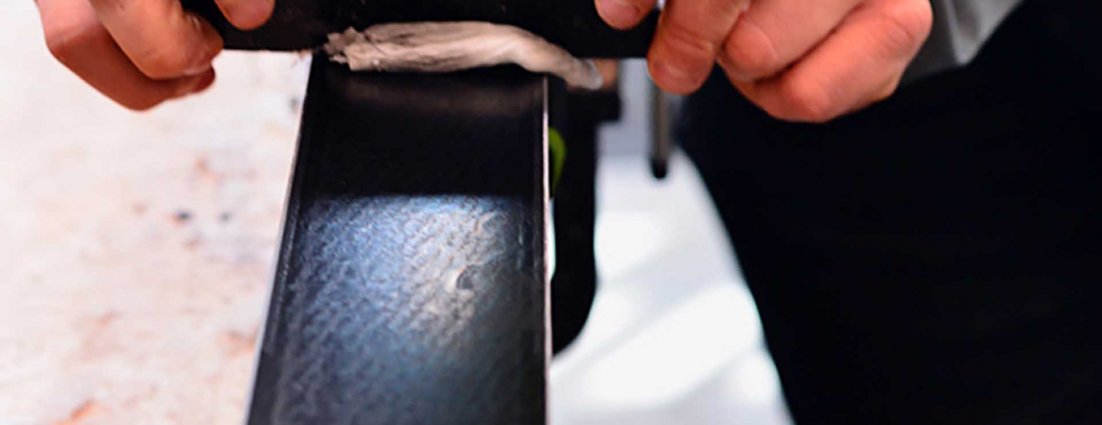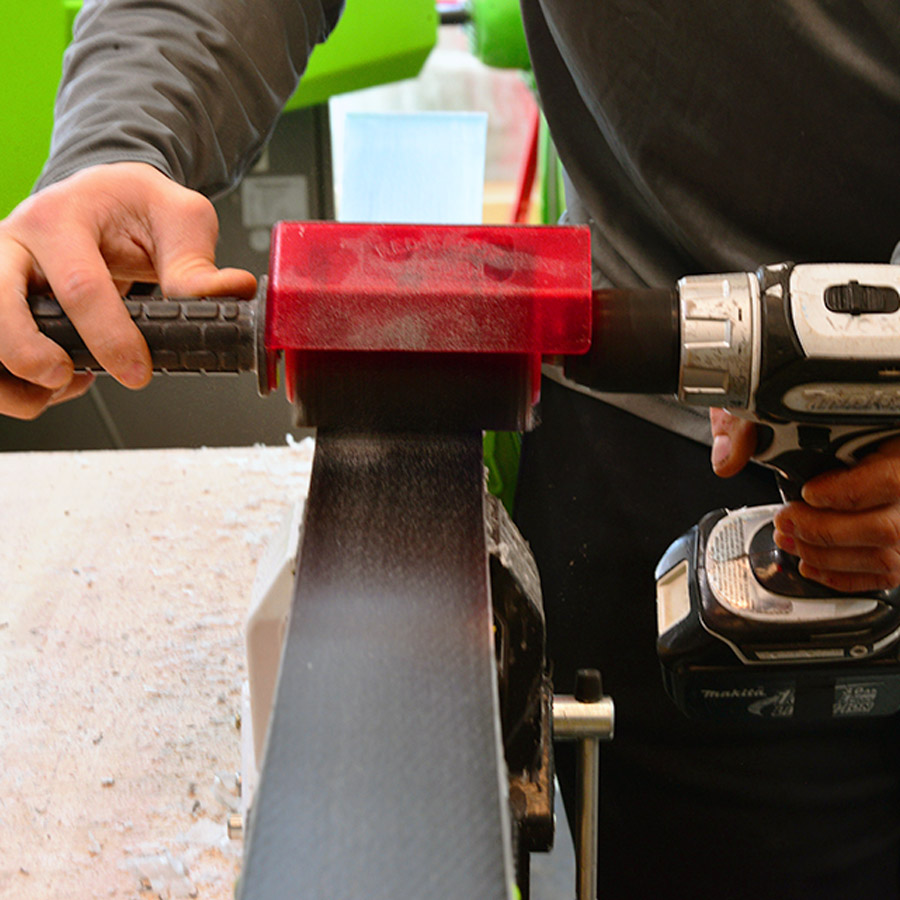Hot Scraping Tips for Spring Skis
03.02.2017 | Todd Carroll

You might have heard of people hot scraping their skis. This means you immediately scrape your skis right after you put wax on them. By scraping the wax when it’s hot, you are able to peel off grime and filth the get brought up to the surface before they soak back into the skis. The reasons people give for hot scraping inevitably vary, as does the frequency with which they perform this seemingly mythical task. If you find yourself scratching your head as to when, why, how, or even IF you need to hot scrape, read on to get the lowdown on this often misunderstood process.
While technicians may not agree about how often is too often, there is almost universal agreement that hot scraping can help rejuvenate a ski.
To start, hot scraping removes dirt, grease, high-fluoro additives, pollen, and any other contaminants from the ski base; and, if done right, can also help condition the base while adding durability. Performing a hot scrape entails ironing in a soft-to-medium hardness wax (think Holmenkol Betamix or Swix CH7) and following up your last iron pass by gently scraping the skis while the wax is still slightly molten.

Scraping while the wax is tacky allows you to efficiently remove the previously mentioned impurities that transfer to the wax. After you’ve scraped the ski, you can go to town with a well-worn steel or brass brush.
“I try to avoid hot scraping slalom skis and will do GS skis every so often,” says Norwegian Europa Cup technician Pepi Culver, “but the general trend is to hot scrape after skiing in dirty, spring snow or after you’ve put a crazy amount of high fluoro race additive into skis. I typically wait until I find more of my base, or hydrocarbon, wax running off the skis than I’m used to when I wax before I go to a hot scrape.”
Jonathan “Napa” Weyant reminds readers that while hot scraping is “super important” for race skis, it requires an advanced technique and skill level to be done right.
If nothing else, doing it right means performing the practice of hot scraping once and sparingly. Despite what you might have heard, repeating the process until the wax comes clean is not the right tactic.
In fact, if you notice gray wax every time you scrape your skis during the course of normal waxing, your first thought shouldn’t be to hot scrape. “If the bases look like they’re puking out dirt every time you wax,” says Napa, “well, that’s not dirt — it’s the base, and you are sloughing it off with too sharp a scraper and way too much pressure.” You can absolutely keep your scrapers sharp, but you can let the tool do the work, rather than trying to force the wax from your base.
Let your tools do the work to avoid erasing all of your hard work to date
Pay close attention to your iron’s temperature, as running it too hot can lead to premature wear on the base, especially when you hot scrape. Keeping your iron temp below 135 degrees Celsius will help mitigate this issue. Additionally, using a brand new metal brush when the bases are still warm will wreak havoc on the base.
Go easy when you brush, especially if you are roto-brushing
So the message is clear: Whether you follow Culver’s advice to clean out your skis when they get contaminated but otherwise avoid hot-scraping altogether; or side with Napa on using hot scraping as another method to help keep your bases tip-top and well-conditioned, you want to be very careful when you perform this task.
“Hot-scraping serves to clean and condition your skis,” says Napa. “I’ve said it before — clean is fast, so why not do a little to gain a lot?”
“Treat it like an oil change,” says Culver. “It’s a refresher, but doesn’t replace the normal cycles of waxing, scraping, brushing and skiing.”
Armed with these tips, you can go forth into the fabled world of hot scraping with the confidence to do the job right one time so that you are putting out a clean base for a fast race.